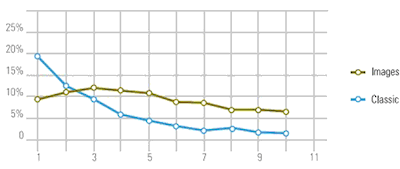Photos Increase Engagement
 When it comes to SEO and content, most of us are on a one track mind. We immediately think of content in the form of quality text with a few strategic keywords thrown in for good measure. However, we need to step out of the box and realize that content can come in other forms such as imagery and photos. Images posted on social platforms such as Facebook often increase the likelihood of engagement. Images (pictures, infographics, cartoons, etc.) tend to stand out because they are colorful, funny, easy to read and so on. Images also can strike "emotion" in a user which can also get them to engage. Many websites do have images on their pages, however, in order to have a good chance of showing up in an image search or on Google search listings, they need to be optimized. We have a couple of best practices for you to follow in order to boost the search factor of your images.
When it comes to SEO and content, most of us are on a one track mind. We immediately think of content in the form of quality text with a few strategic keywords thrown in for good measure. However, we need to step out of the box and realize that content can come in other forms such as imagery and photos. Images posted on social platforms such as Facebook often increase the likelihood of engagement. Images (pictures, infographics, cartoons, etc.) tend to stand out because they are colorful, funny, easy to read and so on. Images also can strike "emotion" in a user which can also get them to engage. Many websites do have images on their pages, however, in order to have a good chance of showing up in an image search or on Google search listings, they need to be optimized. We have a couple of best practices for you to follow in order to boost the search factor of your images.
- Image Content Strategy. What images do you want found in the search results? Think about your brand when hand picking what photos you want to use for your site. It’s a good idea to use a mix of original imagery that is associated with your brand as well as any stock photography you may use. And remember, name your pictures well to raise your chances of being picked up by search engines.
- It’s all about Quality. Let it be known that quality is more important than quantity. You want to make the experience a pleasure for the user by providing clear, easy to see visuals. It’s common sense, we know, but don’t be tempted to put up low quality or blurry photos. That is in bad taste.
- Image Descriptions. Never underestimate the importance of words that are associated with images. Take the time to describe your images - first by the name you give them and second, the alt text that you use. The name of the image should be kept short and simple. A few descriptive words about the image are perfectly acceptable. If you can, go ahead and include appropriate keywords that are relevant to the image, but remember that keyword stuffing is bad. As for the alt text, use this if the image cannot be rendered. The alt text is generally a few words that give a bit more information about what the image is. This is especially helpful for those who use screen reading services.
- Sizing the Image. When you optimize your image, don’t forget to check and make sure the image isn’t slowing down the loading time of your page. If you have larger images, Google’s PageSpeed tool can give help regarding site speed issues.
- Image Sitemap. It’s not a bad idea to consider having a image sitemap in order to help search engines find images on your website.
Images are one of the many ways to connect with your target audience. The idea is not to overload your site with imagery, but tastefully choose images that will further your brand and support your content.

